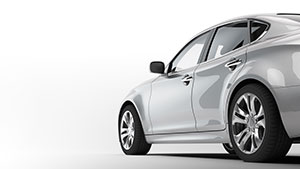How to Avoid Vehicle Depreciation

How to Avoid Vehicle Depreciation
The moment you drive a car off the lot, you lose money. On average, a new vehicle loses 20% of its value in the first year of ownership. By the time that car is five years old, it is worth about 40% of what you paid for it. Is there anything you can do to avoid this loss? Yes. There are a few options to avoid losing tens of thousands of dollars in capital in your car.
Keep it clean
The simplest trick is to keep your vehicle clean and well maintained. The closer to new condition you can keep your vehicle, the less depreciation you’ll see. In the long run, it will most likely add up to a few hundred dollars. However, that will also help you save money by avoiding major repair costs along the way.
Buy used
If you buy a used vehicle, some of that depreciation has already occurred. That means you can get a one- or two-year-old car for a fraction of the cost of new with low miles and all the features you want. Go for a three- to five-year-old vehicle and you’ll see significant savings and very little depreciation by percentage.
The right car
Right now, sedans and four-door cars are going to lose more value over time than trucks, SUVs, and crossovers. The larger vehicles are in fashion, so there is more demand on the used market. For example, a Ford F-150 averages a 46.5% depreciation over five years. A Chevrolet Impala on the other hand loses 52.5% in that same time. With a little online research, you can find the average depreciation of every make and model. Do your homework, and see what has the best value for you.
Invest
Some vehicles gain value as they age. Usually, these are going to be higher-end sports cars. But they can also be oddball, quirky cars that have a collectors market. Some are popular in the customization market. Older Jeep models and Japanese two-door cars are popular in the aftermarket for off-roaders and fun, affordable track cars.
Work vehicle
If you use your vehicle more than 50% of the time as a work vehicle, you can deduct the Section 179 expense deduction along with a Bonus Depreciation on your taxes. That bonus is limited to $11,160 for cars and $11,560 for trucks and vans. There are exceptions for vehicles that are specific to a business, such as a hearse, ambulance, a work van that has permanent shelving in the back, or pick-up that has a full-size bed. As with anything that ends up being a business tax deduction, it’s best to talk to your accountant or tax professional.
Duds
Some cars on the market just flop. They’re great cars, but they just hit the market at the wrong time. Oftentimes, you can find these laying around a dealer’s lot a model year or two old but they’re still brand new and never driven. They’re brand new cars with the price tag of a used car.
Leasing
If you never want to deal with a problematic vehicle in five years or the downside of depreciation, leasing your vehicle will help you avoid both. The downside is you have no residual value in that vehicle at the end of the lease term. However, if you do feel the need to have a new car every two or three years without losing the bulk of the value at that time, leasing is a good option.
Overall, none of these ideas are going to save you from depreciation on their own, except leasing. The ability to buy a brand-new luxury car may seem like a dream come true. However, once you run the numbers and see exactly how little that vehicle will be worth once you finish paying it off, it looks a bit more like a nightmare. Be smart: talk with the loan advisor at your credit union before you get in over your head by buying more car than you can afford.
« Return to "CFFCU Blog"
